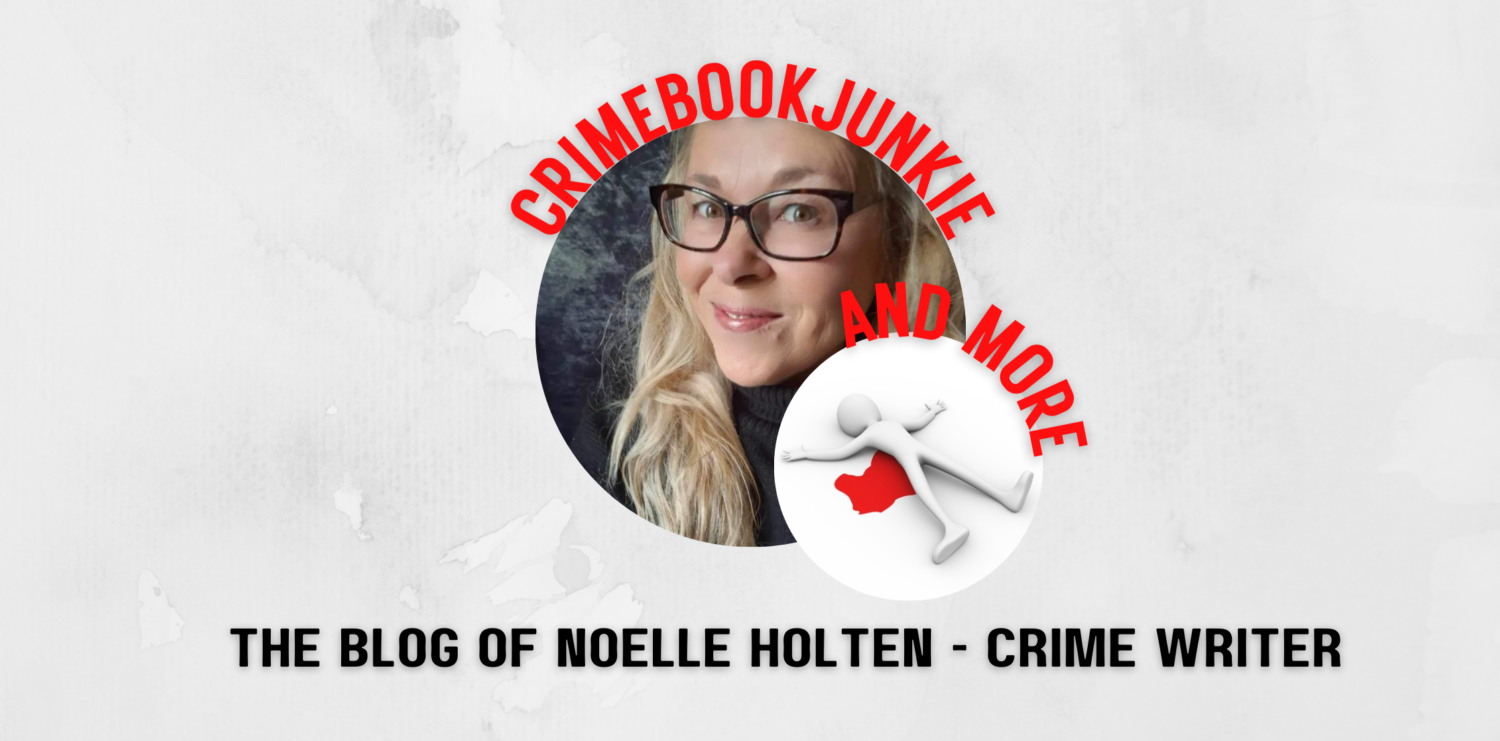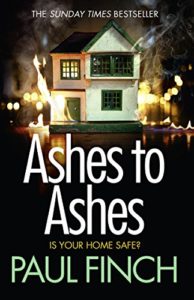I am super excited to share with you an interesting and absolutely fantastic *Author Guest Post* from the wickedly wonderful Paul Finch!! Grab the drink of your choice – coffee for me!- and let’s first find out a bit about the latest Heck novel: Ashes to Ashes and then read on for the guest post!
John Sagan is a forgettable man. You could pass him in the street and not realise he’s there. But then, that’s why he’s so dangerous.
A torturer for hire, Sagan has terrorised – and mutilated – countless victims. And now he’s on the move. DS Mark ‘Heck’ Heckenburg must chase the trail, even when it leads him to his hometown of Bradburn – a place he never thought he’d set foot in again.
But Sagan isn’t the only problem. Bradburn is being terrorised by a lone killer who burns his victims to death. And with the victims chosen at random, no-one knows who will be next. Least of all Heck…
Click the book to buy! ?

Five of the deadliest organised crime syndicates operating today who you may not know about …
Organised crime has been with us almost as long as we’ve had organised society.
From the crime collegia (thieves’ guilds) of Ancient Rome to the Viking chieftains of the Dark Ages, who only held off raiding when they were paid generous protection money, from the robber barons of the high Middle Ages, who ‘taxed’ travellers, defied their king and waged bloody feuds against each other, to the pirates and corsairs of the Spanish Main … the scourge of gangsterdom has been around for as long as we have.
Its root-causes are often to be found in resistance to a pre-existing form of oppression. The Cosa Nostra, for example, was born in the mid-19th century, when feudal landlords objected violently to the annexation of Sicily by mainland Italy; in the US today, the Aryan Brotherhood, a far-reaching white supremacist organisation which dominates the American prison system, came together initially (and superficially) in defence of whites incarcerated alongside black and Latino gang-members.
Not that any of this excuses these vicious cartels, or the heinous behaviour they now indulge in. Many modern crime syndicates attempt to put a polite face on their activities. In the 1960s, the Kray’s firm in East London organised charity events and donated to good causes. Many senior mob figures in North America deny the Mafia even exists, and insist on posing as legitimate businessmen. But the reality in most cases is bloody violence, primarily among the syndicates themselves as they fight for control of the rackets.
We, of course, in the world of crime writing, find them utterly fascinating. Even those of us who don’t write or read crime fiction, are often captivated by the near-romance of these dark, dangerous but often suave and charming rogues. The names of their leading lights are recognisable the world over: Al Capone, Bugsy Siegel, Lucky Luciano, Pablo Escobar. In some cases, they are almost admired. It is often said that Chicago bootlegger, Capone, was merely providing a popular service to a thirsty city. Britain’s Great Train Robbers (though not gangsters per se) attained folk-hero status because of the daring heist they pulled.
But again, the reality of organised crime is often pitiless brutality. Between 2007 and 2014, at the height of Mexico’s so-called Dope Wars, an estimated 164,000 people were murdered. In January this year, a battle between two imprisoned drugs gangs in Brazil’s Manaus jail left over 60 dead, including many who were found decapitated. Capone himself, seen almost as a gentleman by modern standards, didn’t just order the St Valentine’s Day Massacre in 1929, but was a former hit-man in his own right, and personally participated in the beating/shooting murders of three rivals.
This kind of wild underworld warfare is very much the backdrop against which my new Heck novel, ASHES TO ASHES, is set. Though Heck is part of the Serial Crimes Unit, and primarily hunts lone killers, in this latest book he becomes involved in a horrific case at the centre of which a savage gangster war is being waged. In short, the bulk of the narcotics supply in the Northwest of England was once the sole fiefdom of Manchester kingpin, Vic Ship, but now a breakaway group under the leadership of a charismatic young gun, Lee Shaughnessy, is challenging his stranglehold on the post-industrial, drugs-dependent wasteland that is Bradburn (which lies midway between Manchester and Liverpool).
What can only be described as hellish violence ensues, with a soaring body-count and some ghastly murder methods employed. To say more at this stage would be too much of a giveaway, but you don’t need to be a regular Heck reader to know that he’s going to throw himself headfirst into this blood-soaked chaos to try and get a result.
In light of this, and as I really don’t want to hit you with any more spoilers, I thought now might be an opportune time to look again at the real world of organised crime, and pick out what I consider to be five of the deadliest crime syndicates operating today which you possibly don’t know about.
So, forget the Mafia (both the US and Italian versions), the Yakuza, the Triads, the Yardies. Here, in no particular order, are:
Barrio Azteca
Once a prison gang, Barrio Azteca formed in El Paso in the 1980s, but have since made good in the cross-border drugs trade between Mexico and the US. Thanks to their unique geographic positioning, they are one of only very few transnational crime syndicates, members often holding both Mexican and US citizenship, which gives them a huge advantage over their drugs-smuggling rivals. They are also notoriously violent, and are responsible for dozens of killings on both sides of the border (though mainly in Ciudad Juárez, on the Mexican side) their preferred method being to beat and then burn to death their victims, sometimes in front of cheering crowds of gang-members. The group has been accused of carrying out full-scale massacres of rivals, by machine-gunning them to death in their prison cells (after being admitted by staff!), and on one occasion mowing down 16 innocent teenagers at a soccer party because ‘suspect characters’ were believed to be present.
Mungiki
A semi-religious organisation, Mungiki is seldom heard of outside its native Kenya, but inside the country they are a source of terror. With an anti-western ethos and strong indigenous African beliefs, they model themselves on the Mau Mau militia who resisted British colonial rule in the 1950s, but now are mostly known for organising crime in the slums of Nairobi, where protection racketeering and extortion of ordinary residents are their prime activities. Though considered by some to be on the wane, as recently as 2007 Mungiki sought to reinforce their authority with a wave of decapitations. In turn, Kenyan security forces have been accused of heavy-handedness in their response to Mungiki violence, and leaving many of the gangsters shot by the roadside. However, the counter-argument has been made that a large number of Mungiki deaths are just as likely to be the result of factional infighting among members, are they now believed to have split into rival camps.
Ndrangheta
One of several southern Italian cartels – indeed, occasional allies of the Sicilian Mafia and the Neapolitan Camorra – the Ndrangheta of Calabria are fast emerging as one of the pre-eminent criminal organisations in the world. Having initially behaved like old style bandits, in the early days they used kidnapping and blackmail to finance contacts with Colombian coke cartels, but these links have since proved very lucrative, putting the syndicate firmly in the big league. In fact, they are now believed to be among the world’s most successful drugs traffickers and money launderers, with an estimated annual revenue of $50-60 billion, and are even suspected of financing political corruption and infiltrating public offices, and not just in southern Italy, but in the north as well. In fact, Ndrangheta influence is now felt beyond Italy, in Northern Europe, the USA and Australia, where, though they still peddle drugs, they have diversified into arms smuggling and human trafficking.
Los Zetas
According to the US Government, Los Zetas are ‘the most technologically advanced, sophisticated, efficient, violent, ruthless, and dangerous cartel operating in Mexico’. An explanation for this can be found in their origins. During the 1990s, the group was formed by former special forces soldiers, who had deserted the Mexican Army looking for better pay. They found it working as muscle for the massive Gulf Cartel, and brought with them extreme mercilessness, but also high-tech weapons and the skills to use them. In 2010, again tired of taking orders, Los Zetas broke away to form their own syndicate. Despite internal instability, they are highly successful drugs traffickers, but are mainly notable for the staggering degree of violence they will use, having instigated numerous massacres of both rivals and civilians alike. Geographically, they are now the largest cartel in Mexico (controlling 11 states!), but their power extends far beyond their traditional homeland, both north and south.
Solntsevskaya Bratva
Perhaps the dominant force in the terrifying world of the Russian Mafia. Moscow-based, and strictly adhering to the normal Russian gangster code that all members must engage in regular fitness and weapons training, in effect turning themselves into a spec-ops of the underworld, the Solntsevskaya, though controlled by a central committee, are organized into warlike brigades and these into smaller but very mobile and highly aggressive ‘wolf-packs’. As such, they have no compunction about challenging rival mobsters, and have successfully extended their arms and drugs-trafficking, money-laundering, assassination and general racketeering businesses into the US and the Caribbean. They have a particularly firm foothold in Atlanta, where they are said to have taken on various other established groups and comprehensively defeated them in battle. American sources say they are in cahoots with Russia’s Federal Security Service, but this has not been proved.
Wow!!!! A massive thank you to Paul Finch for this superb post! Organised crime is definitely an area of interest for me and it was fascinating to learn about those syndicates which are still very much around us. Who knew!?


Wow fascinating and so helpful to me who has been writing about Russian Mafia and Ukrainian drug/gun runners in my novel. I’ve also touched on the Mafia in several short stories, usually those financing and controlling the entertainment business, mostly in times gone by. I learn something every day. Wishing you much success with your work. Appreciate your expertise and generosity sharing your knowledge here.